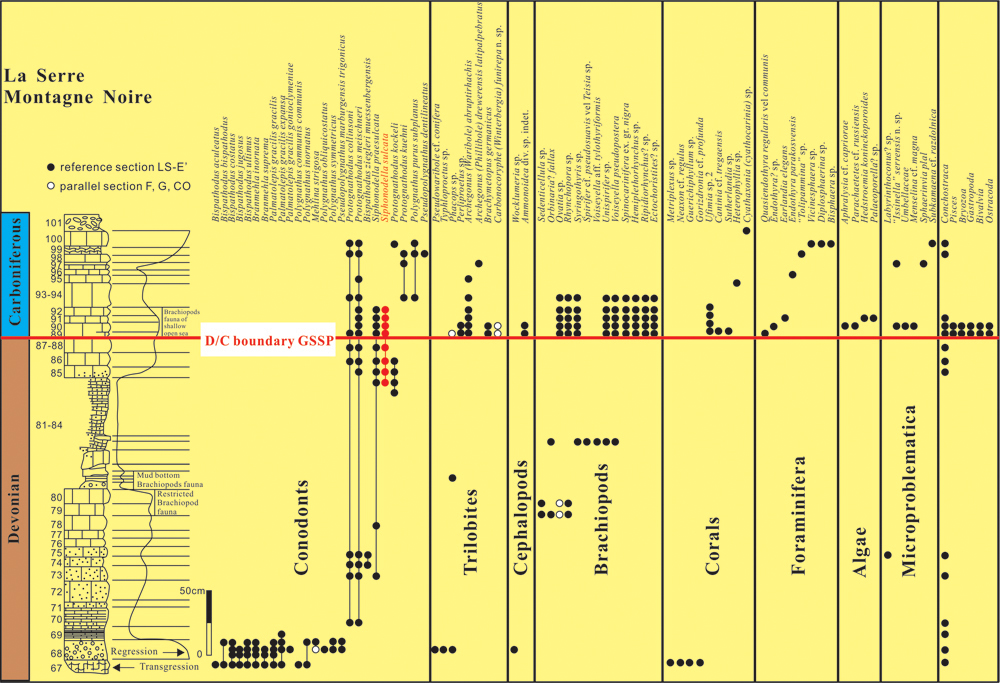The Tournaisian is the lowest stage or oldest age of the Mississippian, preceded by the Famennian, and followed by the Visean. It correlates with the regional North American Kinderhookian and lower Osagean stages and the regional China Tangbagouan stage. In British stratigraphy, the Tournaisian contains three substages: the Hastarian, Ivorian and lower Chadian.The base of the Tournaisian, Mississippian Sub-System and Carboniferous System was defined at the base of Bed 89 in Trench E’ at La Serre, France. It is consistent with the first appearance of the conodont Siphonodella sulcata within the evolutionary lineage from Siphonodella praesulcata to Siphonodella sulcata. The top of the Tournaisian is at the first appearance of the fusulinid species Eoparastaffella simplex (morphotype 1/morphotype 2).
The La Serre section is located in the southeastern Montagne Noire, District of Cabrières, France. The strata in the trench, as well as all of La Serre hill and vicinity, are part of a geologic unit named "Klippen of Cabrières". This trench averages 80cm in depth on the southern slope of La Serre Hill, is about 125m south of the hilltop, about 525m east of La Roquette farmhouse, 2.5km northeast of the village of Fontès (sheet 1:25,000 Pezenas XXVI/44, 1-2, x = 682.55, y = 140.12). The youngest Devonian and earliest Carboniferous beds are characterized by a sequence of predominantly bio-detrital oolitic limestone within a pelagic matrix of shale and cephalopod bearing calcilutites.
Trilobites, Belgibole abruptirhachis, Archegonus(Phillibole) and Carbonocoryphe, occur in Bed 89, are secondary markers for the D/C Boundary.

This figure is after paproth et al. (1991) and Kaiser (2009).

